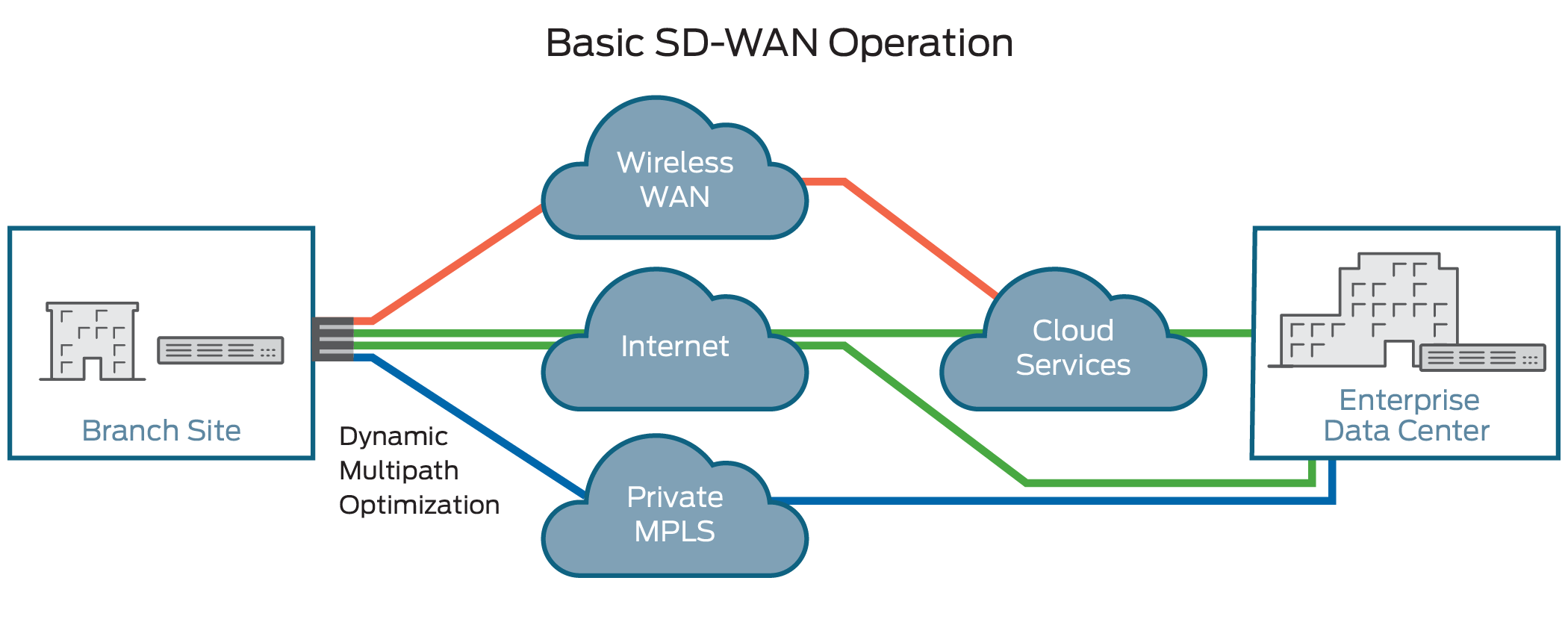The shift towards cloud computing and ubiquity of mobile devices within enterprises has fundamentally changed enterprise WAN routing over the last decade. While MPLS (Multiprotocol Label Switching) was one of the most popular enterprise WAN routing solutions for years, its popularity has begun to level off while enterprises look for WAN technologies that are optimized to meet the challenges of modern IT.
This has led to a surge in the popularity of SD-WAN with SD-WAN infrastructure and services revenue are expected to experience a CAGR (compound annual growth rate) of 69.6%. and reach $8.05 billion USD in 2021 according to IDC.
However, even if the benefits of SD-WAN are obvious, this still leaves organizations with some decisions to make when deciding between SD-WAN solutions. While legacy SD-WAN has its benefits when compared to MPLS, it falls short of maximizing the potential of SD-WAN in the same way enterprise-grade cloud-based SD-WAN (a.k.a. SDWaaS) solutions can.
In this piece, we’ll dive into the pros and cons of legacy SD-WAN and then explain the unique advantages SDWaaS can offer enterprises looking to get the most out of their SD-WAN investment.

The pros and cons of legacy SD-WAN
When comparing legacy SD-WAN to MPLS, there is a fairly clear tradeoff: legacy SD-WAN offers the benefits of software defined routing and economic Internet bandwidth while suffering from a bit of a latency and unpredictable performance problem as the distance between endpoints grows to a global scale. Generally, in the same geographical region, legacy SD-WANs limitations will not have too much of a practical impact, but as traffic needs to travel across the globe, latency can become a real challenge.
The root cause of these performance tradeoffs at scale is that legacy SD-WAN depends completely on the Internet, and while it does a good job of selecting the best path, sometimes there is simply no “good” path available. This in turn leads to the aforementioned latency and unpredictability problems. While enterprises could invest in MPLS to provide reliable connections where legacy SD-WAN falls short, that begins to defeat the purpose of shifting away from MPLS to a more affordable source of bandwidth for your enterprise in the first place.

The SDWaaS advantage
Given the tradeoffs enterprises face trying to strike a balance between the affordability and flexibility of legacy SD-WAN and MPLS, it seems like the ideal solution would be one that combines the economies of scale and cloud-friendliness offered by the Internet with the reliability of a dedicated MPLS connection. That, in a nutshell, is what SDWaaS does.
To understand a bit more about how SDWaaS is able to outperform both legacy SD-WAN and MPLS by combining the “best of both worlds”, let’s dive into the 3 As of SDWaaS: agility, availability, and affordability.
Agility
Enterprise-grade SDWaaS supports a variety of transport methods (4G LTE, DSL, MPLS, Cable, etc.) and benefits from a number of Points of Presence (PoPs) across the globe. This means that SDWaaS is not only able to offer the routes available to legacy SD-WAN, it is also has a robust private backbone capable of picking up the slack in the instances where no other “good path” exists. The PoPs and backbone make a big difference in performance at a global scale when compared to legacy SD-WAN.
This enables a level of agility that neither MPLS or legacy SD-WAN can match on their own. Whether you need to transition a workload from a corporate data center to the cloud, provision a new site in a new geographic location for access to your enterprise network, or simply maintain a high-speed connection between two offices on opposite sides of the globe, SD-WAN can help you meet those challenges with a level of performance and ease that simply isn’t practical using other methods.

Simply put, SDWaaS resolves the challenges of cloud-computing and mobile & remote users that MPLS can’t while adding a level of globe-spanning performance legacy SD-WAN struggles to.
Availability
Uptime is a vital to productivity in any industry. That means that organizations must invest in making sure their WAN solution is robust and resilient, or in other words: highly available. With legacy SD-WANs, users are either left with no SLAs or the increased costs and limited flexibility of service-based legacy SD-WAN.
SDWaaS on the other hand offers SLA-backed connectivity supported by multiple Tier 1 Internet Service Providers (ISPs) with the aforementioned PoPs across the globe. This enables SDWaaS not only to find the optimal path between to endpoints, but also to failover to the next closest PoP in the event of a failure. This makes SDWaaS a robust and resilient WAN solution.
Affordability
In the past, to resolve the shortcomings of SD-WAN enterprises had to do one of two things that effectively minimized the ROI of SD-WAN: supplement it with MPLS or purchase a service-based solution from a carrier. In both cases, significant cost is added to the solution, making SD-WAN closer to MPLS in terms of the cost of bandwidth and connectivity.

SDWaaS is able to avoid this conundrum since the reliability and performance issues associated with legacy SD-WAN are resolved by components that are already “baked in” to the SDWaaS solution: SLA-backed service and a private backbone supported by multiple Tier 1 ISPs. By coupling these components with the flexibility of SD-WAN, SDWaaS becomes a holistic WAN solution that is enterprise-ready at a significantly lower bandwidth cost than MPLS or service-based SD-WAN.
The takeaway: SDWaaS solves the problems of legacy SD-WAN
The SLA-backed resilient private backbone that comes along with an SDWaaS solution enables it to offer enterprises all the upside of SD-WAN while keeping costs affordable and minimizing the downsides of legacy SD-WAN.
